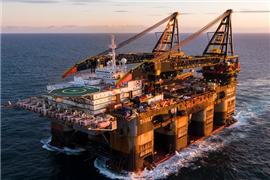Spanish firms partner up to recycle wind farm components
26 July 2023
Energyloop, a company owned by FCC Ambito and energy giant Iberdrola, has partnered with circular dismantling specialist Surus, to improve the recycling of wind turbine blades.
 Surus will provide wind turbine components to Hyperloop from its dismantling project. (PHOTO: Iberdrola)
Surus will provide wind turbine components to Hyperloop from its dismantling project. (PHOTO: Iberdrola)
The collaboration will see Surus provide wind turbine blades that are not suitable for resuse from its decommissioning and repowering projects - which involves the replacement of older turbines with new ones, to Energloop for recycling.
Luis Sanz, Energyloop’s managing director, said: “This collaboration with Surus, which has a wealth of knowledge, will undoubtedly strengthen Energyloop’s activity and provide a strong boost to the circular economy, improving the necessary competitiveness and sustainability”.
Looking at the European wind sector, Energyloop estimates that by 2030 around 5,700 wind turbines will be decommissioned across the continent each year.
With 1,345 operational sites that collectively comprise more than 22,000 wind turbines and 66,000 turbine blades, Spain is believed to have the second highest number of wind farms in Europe.
“In order to continue to maintain its leadership in wind energy, Spain needs to modernise its wind farms, as they need to be modernised, both because of their age (more than 36% of wind turbines are more than 15 years old) and because of their efficiency and contribution to sustainability,” said Iberdrola.
According to the company, “one of the consequences of the repowering projects that will be addressed is the need to provide a sustainable solution for the blades of the wind turbines that have been replaced”.
The recycling of wind turbines and blades is described by Iberdrola as a key challenge for the renewable energy sector.
The units have an average useful lifespan of 20 to 25 years and the blades are primarily made of polyester reinforced with fibreglass or carbon fibre, and sometimes other resins.
While such composite materials can be difficult and expensive to recycle, fluidised bed or solvolysis can be used to separate the resins and fibres into reusable materials, and mechanical shredding and separation yields materials that can be used as filler in building materials or plastics.
CONNECT WITH THE TEAM










